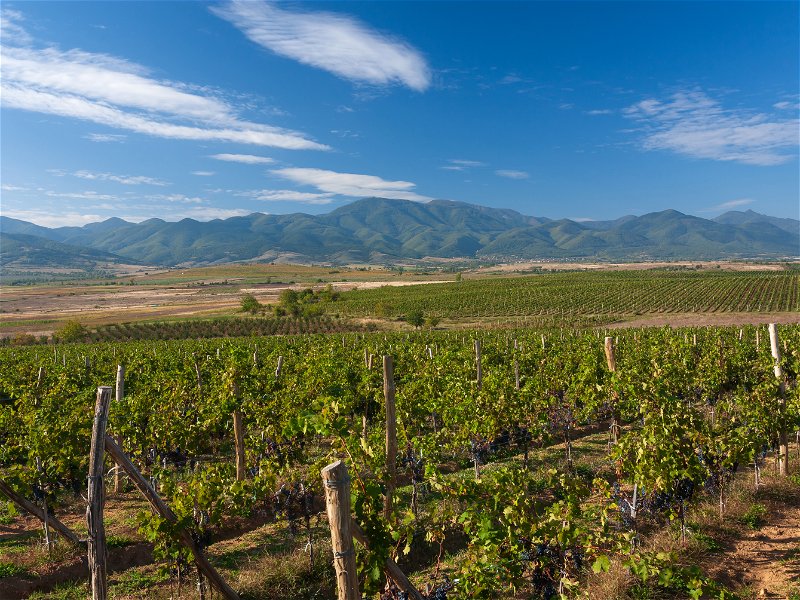Bulgaria is one of the underrated wine-growing nations of Europe, because the conditions for quality viticulture are in principle excellent, on the one hand in terms of soils, but also in relation to climate. Relatively little is known about the history of viticulture, although Thrace, which partially extends into the country, is one of the oldest wine-growing regions in the world, with a history stretching back over several thousand years. Bulgaria's certain ageing potential for top-quality wines, however, has only been gradually discovered and developed over the past 30 years, as large cooperatives were initially formed after the phylloxera disaster at the end of the 19th century. In 1947, under the socialist government, viticulture was placed under the state monopoly "Vinprom". Wines were produced according to more industrial standards to meet the needs of neighbouring socialist countries.
After 1990, the wineries were finally privatised. With such icons as Stefan Graf Neipperg from Bordeaux, experienced and renowned winemakers began to take an interest in the country.
Bulgaria is divided into 5 wine-growing regions. In the north is the Danube Plain region with a fairly continental climate; here are grown mainly Chardonnay, Muscat Ottonel, Cabernet Sauvignon, Merlot and the native Pamid and Gamza. The Black Sea region in the east of the country is the preferred home of white wines such as Riesling, Muscat, Misket or Rkaktsiteli. The Rose Valley in central Bulgaria produces white as well as red wines, preferably from international varieties. The Upper Thracian Plain in the south is home to international varieties as well as indigenous ones such as Pamid, and the Struma Valley with its Mediterranean climate offers ideal conditions for varieties such as Cabernet Sauvignon, Merlot and the indigenous Melnik.
Nearly 2 million hectoliters are produced annually on approximately 97,000 hectares.
Bulgarian cuisine combines influences from the Balkans with those from the Orient. Stews prepared from seasonal ingredients are particularly popular.
Wine Regions in Bulgaria
Thracian lowlands
The Thracian Lowlands, also called the Southern Region or Thracian Valley, represents a good 35% of Bulgaria's vineyard area with its approximately 60,000 hectares. The region extends over a large area in the south of Bulgaria far to the east to the Sakar Mountains, near the Turkish border. The...
